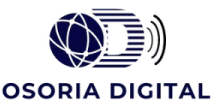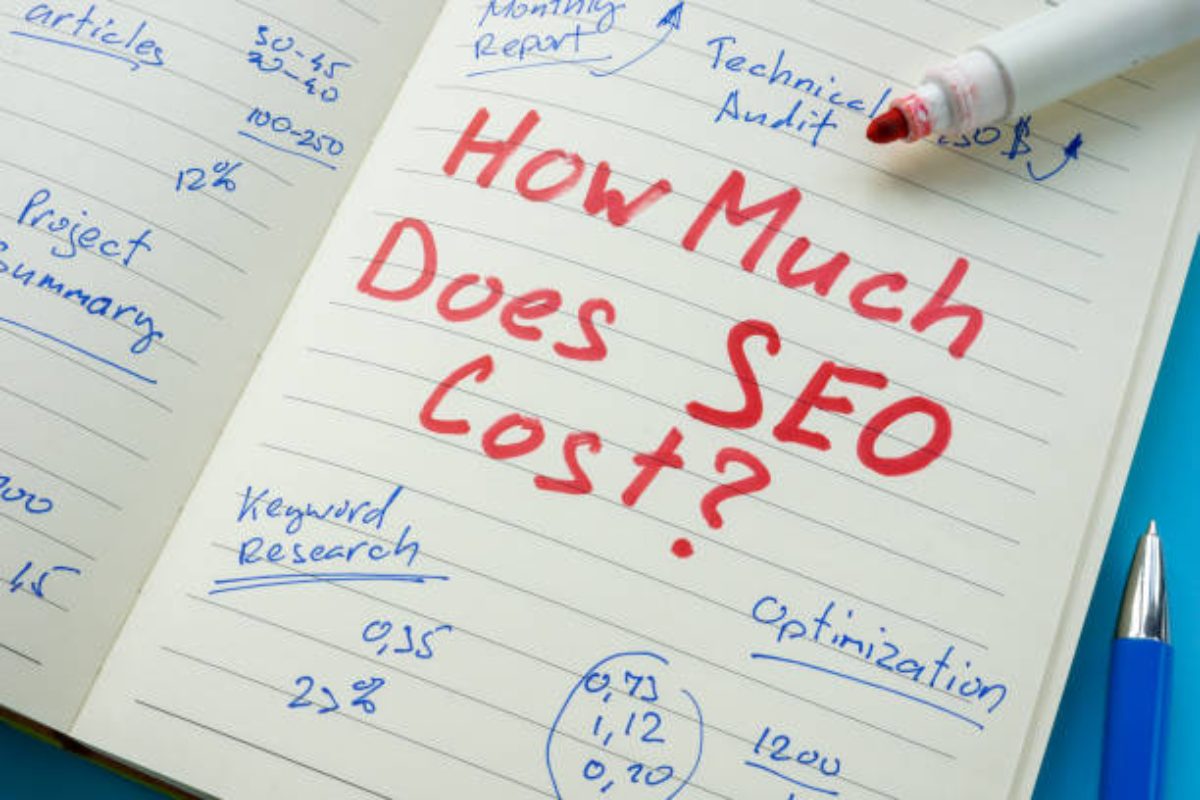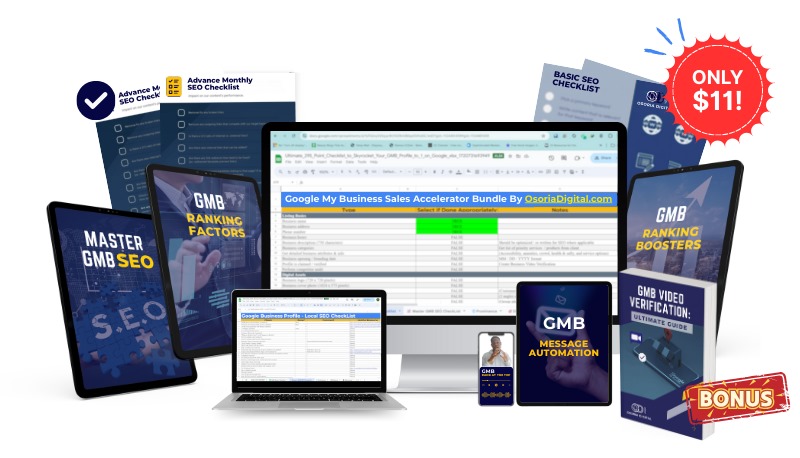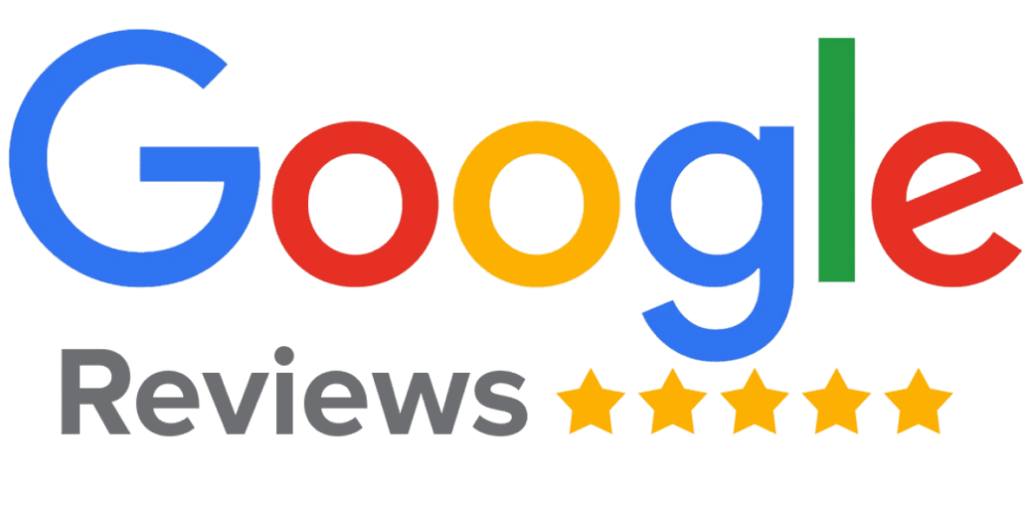In today’s digital landscape, SEO for Educational Institutions is not just an option; it’s a necessity. As schools, universities, and private institutions vie for the attention of prospective students, having a robust SEO strategy is critical to standing out in a crowded market. This guide will explore every aspect of SEO tailored specifically for educational institutions, providing you with actionable insights and strategies to enhance your online visibility, attract more traffic, and achieve your enrollment goals.
Introduction to Education SEO
Educational institutions face unique challenges in the digital arena. With the increasing reliance on search engines to find and compare educational opportunities, it’s essential for institutions to optimize their online presence. SEO (Search Engine Optimization) involves optimizing your website to rank higher in search engine results pages (SERPs), making it easier for prospective students and parents to find you. A well-executed SEO strategy can significantly impact your institution’s visibility, credibility, and overall success.
What is SEO for Educational Institutions?
SEO for Educational Institutions refers to the process of enhancing your website’s visibility in search engine results to attract more qualified traffic. Unlike general SEO, education-specific SEO takes into account the unique needs and search behaviors of students, parents, and educational professionals. This includes optimizing content for keywords relevant to educational programs, improving site navigation, and ensuring that your institution’s website is user-friendly and informative.
Key Components of Education SEO
Effective SEO for educational institutions involves several key components. These include on-page optimization, technical SEO, off-page strategies, and best practices for educational content. Understanding and implementing these components will help you build a strong foundation for your SEO efforts.
On-Page Optimization
On-page optimization refers to the elements within your website that can be controlled and optimized to improve search engine rankings. This includes keyword research and placement, as well as content quality and relevance.
1. Keyword Research and Placement
Keyword Research:
Keyword research is the cornerstone of any SEO strategy. It involves identifying the search terms and phrases that potential students and parents are using to find educational programs. Effective keyword research helps you understand what your target audience is searching for and how you can tailor your content to meet their needs.
Steps for Effective Keyword Research:
- Identify Relevant Topics: Start by brainstorming topics related to your educational programs and institution. For example, if you offer a degree in computer science, relevant topics might include “computer science degree,” “software engineering courses,” or “best universities for computer science.”
- Use Keyword Research Tools: Tools like Google Keyword Planner, SEMrush, and Ahrefs can help you find specific keywords and phrases related to your topics. These tools provide data on search volume, competition, and related keywords.
- Analyze Competitors: Review the keywords that your competitors are targeting. This can provide insights into gaps in your own strategy and opportunities for improvement.
Keyword Placement:
Once you’ve identified your target keywords, it’s important to use them strategically throughout your website.
Best Practices for Keyword Placement:
- Title Tags and Meta Descriptions: Include primary keywords in your title tags and meta descriptions. Title tags should be concise and descriptive, while meta descriptions should provide a compelling summary of the page’s content.
- Headings and Subheadings: Use keywords in headings (H1, H2, H3) to structure your content. This not only helps search engines understand the content but also makes it easier for users to navigate.
- Content: Incorporate keywords naturally within the body of your content. Avoid keyword stuffing, which can negatively impact readability and SEO.
2. Content Quality and Relevance
High-Quality Content:
Content is a critical component of SEO. High-quality content is informative, engaging, and relevant to your target audience. It should address the needs and interests of prospective students and provide valuable information about your institution and its programs.
Tips for Creating Quality Content:
- Understand User Intent: Analyze what your audience is looking for and provide answers to their questions. For instance, if prospective students are searching for “how to apply for college,” create detailed content on the application process.
- Be Comprehensive: Provide in-depth information on topics related to your educational programs. This could include detailed program descriptions, faculty profiles, and student testimonials.
- Update Regularly: Regularly update your content to keep it fresh and relevant. This could involve adding new program details, updating faculty information, or posting recent news and events.
Technical SEO for Educational Websites
Technical SEO involves optimizing the technical aspects of your website to improve its performance and search engine rankings. This includes site structure, mobile optimization, and page speed.
1. Site Structure and Navigation
Site Structure:
A well-organized site structure helps search engines crawl and index your website more effectively. It also improves the user experience by making it easier for visitors to find the information they need.
Best Practices for Site Structure:
- Logical Hierarchy: Organize your website into a logical hierarchy with clear categories and subcategories. For example, have separate sections for undergraduate programs, graduate programs, admissions, and faculty.
- Sitemap: Create and submit a sitemap to search engines. A sitemap is an XML file that lists all the pages on your site, helping search engines crawl and index your content.
- Internal Linking: Use internal links to connect related content and guide users through your site. This not only improves navigation but also helps distribute page authority throughout your website.
- Breadcrumbs: Implement breadcrumb navigation to enhance user experience. Breadcrumbs show users their current location on the site and allow them to easily navigate back to previous pages.
2. Mobile Optimization
Mobile Optimization:
With the increasing use of mobile devices, optimizing your website for mobile is essential. Google’s mobile-first indexing means that the mobile version of your site is used for ranking and indexing.
Tips for Mobile Optimization:
- Responsive Design: Ensure your site is responsive, meaning it adapts to different screen sizes and devices. A responsive design provides a consistent user experience across desktops, tablets, and smartphones.
- Mobile-Friendly Layout: Design your site to be easy to use on mobile devices. This includes using readable fonts, ensuring buttons are easily clickable, and optimizing navigation.
- Test Mobile Performance: Use tools like Google’s Mobile-Friendly Test to assess how well your site performs on mobile devices. Make necessary adjustments based on the test results.
3. Page Speed
Page Speed:
Page speed is a crucial factor in user experience and SEO. Slow-loading pages can lead to higher bounce rates and lower search engine rankings.
Ways to Improve Page Speed:
- Optimize Images: Compress and resize images to reduce load times. Use tools like TinyPNG or ImageOptim to optimize image files without sacrificing quality.
- Minimize HTTP Requests: Reduce the number of elements on your page that require HTTP requests. This includes minimizing the use of external scripts and stylesheets.
- Use Caching: Implement caching to speed up page loading for returning visitors. Caching stores copies of your site’s pages so they load faster for users who visit frequently.
Off-Page Strategies in Education SEO
Off-page SEO involves activities that occur outside of your website to improve its authority and visibility. Key off-page strategies include backlink building and social media presence.
1. Backlink Building
Backlinks:
Backlinks are links from other websites to your own. They signal to search engines that your site is credible and authoritative. High-quality backlinks from reputable sources can significantly boost your search rankings.
Strategies for Building Backlinks:
- Guest Blogging: Write guest posts for reputable educational blogs and websites. Include a link back to your site within the content or author bio.
- Partnerships: Collaborate with other educational institutions and organizations to gain backlinks. This could involve joint research projects, events, or educational resources.
- Directory Listings: Submit your site to educational directories and review sites. Ensure that your listings are accurate and up-to-date.
2. Social Media Presence
Social Media:
Social media platforms can drive traffic to your website, increase brand visibility, and support your SEO efforts. Engaging with your audience on social media can also enhance your institution’s online reputation.
Best Practices for Social Media:
- Engage with Your Audience: Respond to comments, messages, and reviews to build a strong online community. Engaging with users helps foster a positive relationship with your audience.
- Share Valuable Content: Promote your content on social media to reach a broader audience. Share updates about programs, events, and achievements to keep your followers informed.
- Use Social Media for Backlinks: Share your content on social platforms to encourage others to link back to it. This can improve your site’s authority and search rankings.
SEO Best Practices for Educational Content
Creating engaging and SEO-friendly content is essential for attracting and retaining your audience. Focus on high-quality content and effective use of multimedia.
A. Creating Engaging and SEO-Friendly Content
- Importance of High-Quality Content
High-quality content is key to engaging your audience and improving your search rankings. It should be informative, well-written, and relevant to your target audience. High-quality content not only attracts visitors but also encourages them to stay longer and explore more of your site.
- Incorporating Keywords Naturally
Integrate keywords naturally into your content to avoid keyword stuffing. Focus on creating content that reads well and provides value to the reader. Use variations of your target keywords and related terms to enhance relevance.
B. Utilizing Multimedia in Education SEO
- Video Optimization
Videos are a powerful tool for engaging users and improving SEO. Optimize videos by including relevant keywords in titles, descriptions, and tags. Consider creating videos that showcase campus life, student testimonials, or program highlights.
- Image SEO
Images can enhance your content and improve user experience. Optimize images by using descriptive file names and alt text. Ensure that images are compressed to reduce load times and improve page speed.
Case Studies: Successful Education SEO Implementations
Examining successful case studies can provide valuable insights and inspiration for your own SEO efforts. Here are two examples of institutions that have effectively implemented SEO strategies.
OSORIA DIGITAL Helps Online Business School Boost Traffic by 217%
Case Study Summary: Metropolitan School of Business and Management
Background: Osoria Digital was engaged by Metropolitan School of Business and Management (MSBM), a leading EdTech platform providing UK-standard education to students in the AMEA region. MSBM offers programs such as Professional Certificates, MBA, International Postgraduate Diplomas, and Doctorate Degrees, all aimed at making top-tier British education accessible and affordable online.
The Challenge: MSBM needed to enhance their online visibility in Nigeria for keywords related to their services. The main challenge was to improve their website’s SEO, which was previously undermined by poor keyword optimization, slow page load times, and irrelevant content.
The Solution: Osoria Digital executed a comprehensive SEO overhaul, addressing issues such as:
- Lack of keyword optimization and low keyword density
- Heavy images and sliders affecting page speed
- Irrelevant blog content
The campaign also included a robust link-building strategy, leveraging MSBM’s expertise and reputation to secure high-quality backlinks from authoritative EdTech sites.
Results:
- Keyword Rankings: MSBM achieved top-three rankings on Google for their main keywords in Nigeria.
- Traffic Increase: Organic visits surged from 1.2K in March 2023 to 1.4K in June 2023, reflecting a 217% increase in traffic.
Takeaway: The campaign’s success highlights the impact of strategic SEO and authoritative link-building on improving search rankings and driving significant traffic growth.
For more details on how this transformation was achieved, view the full case study here.
Local SEO for Educational Institutions
Local SEO is crucial for educational institutions looking to attract students from specific geographic areas. It involves optimizing your website and online presence to rank higher in local search results.
A. Importance of Local SEO
Local SEO helps your institution appear in search results for location-based queries. For instance, prospective students searching for “colleges near me” or “universities in [city]” will find your institution if it’s optimized for local search.
B. Google My Business Optimization
Google My Business:
Google My Business (GMB) is a free tool that allows you to manage your institution’s online presence on Google. Optimizing your GMB listing can improve local search visibility and attract more local students.
Tips for Optimizing GMB:
- Complete Your Profile: Ensure that all information, including address, phone number, and website, is accurate and up-to-date.
- Add Photos: Upload high-quality photos of your campus, facilities, and events to engage potential students.
- Encourage Reviews: Ask current students and alumni to leave positive reviews on your GMB listing. Respond to reviews to show engagement and build trust.
SEO Tools for Education Industry Professionals
Utilizing the right SEO tools can help you analyze performance, identify opportunities, and optimize your strategy. Here are some essential tools for education industry professionals.
A. Analyzing Top SEO Tools
Google Analytics: Track and analyze website traffic, user behavior, and conversion metrics. Google Analytics provides insights into how users interact with your site and helps you make data-driven decisions.
SEMrush: SEMrush offers a comprehensive suite of SEO tools, including keyword research, site audits, and backlink analysis. It helps you monitor your site’s performance and identify areas for improvement.
Ahrefs: Ahrefs provides tools for keyword research, site audits, and backlink analysis. It offers valuable insights into your site’s SEO health and competitive landscape.
Moz: Moz offers tools for keyword research, site audits, and link building. Its features help you optimize your site and track your SEO progress.
B. Choosing the Right Tools for Educational Websites
Select tools that align with your specific needs and goals. Consider factors such as ease of use, cost, and the features offered. Combining multiple tools can provide a more comprehensive view of your SEO performance and opportunities.
Measuring and Analyzing SEO Success in Education
Regularly measuring and analyzing your SEO performance is essential for understanding what’s working and what needs improvement. Use key metrics and tools to track your progress and make informed decisions.
A. Key Metrics to Track
Organic Traffic: Monitor the amount of traffic coming from search engines. An increase in organic traffic indicates improved search rankings and visibility.
Keyword Rankings: Track the rankings of your target keywords to assess your site’s performance and identify areas for optimization.
Conversion Rate: Measure the percentage of visitors who complete desired actions, such as filling out a contact form or applying for admission.
Bounce Rate: Analyze the percentage of visitors who leave your site after viewing only one page. A high bounce rate may indicate issues with content relevance or user experience.
B. Utilizing Google Analytics for Education SEO
Google Analytics: Use Google Analytics to track key metrics, such as traffic sources, user behavior, and conversion rates. Set up goals and events to measure specific actions, such as form submissions or downloads.
Custom Reports: Create custom reports to focus on the metrics most relevant to your institution’s goals. Use these reports to track progress and identify areas for improvement.
FAQs on Education SEO
- What is the significance of SEO in the education sector?
SEO is crucial for educational institutions as it helps improve online visibility, attract prospective students, and enhance overall credibility. A strong SEO strategy ensures that your institution ranks higher in search results, making it easier for potential students to find and explore your programs.
- How can educational institutions optimize their websites for local search?
Optimize your website for local search by incorporating location-specific keywords, optimizing your Google My Business listing, and ensuring that your site’s content is relevant to local audiences. Use local citations and encourage reviews from students and alumni to enhance your local presence.
- Are there specific SEO challenges faced by the education industry in the US?
Yes, the education industry faces unique SEO challenges, such as high competition for keywords, diverse audience needs, and the need to address various educational levels and programs. Institutions must tailor their SEO strategies to address these challenges and meet the needs of their target audience.
- Can social media impact SEO for educational websites?
Yes, social media can impact SEO by driving traffic to your website, increasing brand visibility, and supporting backlink building. Engaging with your audience on social media and sharing valuable content can enhance your institution’s online presence and improve search rankings.
What Does SEO Look Like for Schools, Universities, and Private Institutions?
SEO strategies for schools, universities, and private institutions share common elements but are tailored to their specific needs. For example:
- Schools: Focus on local SEO to attract students within the community. Highlight programs, faculty, and campus events to engage parents and students.
- Universities: Implement a comprehensive SEO strategy to target a broad audience. Optimize for program-specific keywords, create valuable content, and build authority through backlinks.
- Private Institutions: Emphasize unique selling points and niche programs. Optimize for keywords related to specialized programs and create content that highlights the institution’s strengths.
Get SEO Help from Education SEO Pros
Navigating the complexities of SEO for educational institutions can be challenging. Consider booking an SEO Roadmap Strategy Session with Osoria Digital to get expert guidance tailored to your institution’s needs. Our team of SEO professionals will work with you to develop a customized strategy that drives results and helps you achieve your enrollment goals.
Why is SEO so important for educational institutions?
SEO is essential for educational institutions as it improves online visibility, attracts prospective students, and enhances overall credibility. A well-optimized website ensures that your institution ranks higher in search results, making it easier for potential students to find and explore your programs.
What Can SEO Improve for Schools?
SEO can improve search rankings, increase website traffic, and enhance user experience. It helps schools attract more qualified leads, showcase their programs, and ultimately boost enrollments.
How to Get Your School Started with SEO
- Target Long-Tail Keywords: Focus on specific, longer phrases related to your programs and services. This can help you attract more qualified traffic and improve your search rankings.
- Create Pages for Different Courses and Degrees: Develop dedicated pages for each course and degree program, including detailed descriptions and relevant keywords.
- Use HTTPS on Your Site: Ensure that your site is secure by implementing HTTPS. This not only improves user trust but also benefits your search rankings.
- Host Promo Events: Promote events and special offers on your site to attract more visitors and generate interest.
- Optimize Your Page Speed: Improve page loading times to enhance user experience and reduce bounce rates.
- Use Responsive Design: Ensure that your site is mobile-friendly and adapts to different screen sizes.
- Earn Reputable Backlinks: Build high-quality backlinks from reputable sources to enhance your site’s authority and search rankings.
Improve SEO for Your Educational Institution
Let’s drive results together by understanding the shift in search trends, embracing semantic search and topic clusters, and prioritizing user experience. Leverage local SEO for campus visibility, integrate video content into your SEO strategy, and maximize SEO with E-E-A-T (Expertise, Experience, Authoritativeness, Trustworthiness). Stay ahead with AI and machine learning, implement structured data for rich snippets, and monitor and adapt to algorithm updates.
Understanding the Shift in Search Trends:
Stay updated with the latest search trends and adapt your SEO strategy accordingly. This includes understanding changes in user behavior, search algorithms, and emerging technologies.
Embracing Semantic Search and Topic Clusters:
Semantic search focuses on understanding the intent behind queries. Use topic clusters to organize your content around central themes and improve search relevance.
Prioritizing User Experience:
Ensure that your website provides a seamless and engaging user experience. This includes optimizing site speed, navigation, and mobile-friendliness.
Leveraging Local SEO for Campus Visibility:
Optimize your local SEO efforts to enhance visibility for location-based searches. This includes updating your Google My Business listing, optimizing for local keywords, and encouraging reviews.
Integrating Video Content into Your SEO Strategy:
Video content can boost engagement and search rankings. Create informative and engaging videos related to your institution and optimize them for search engines.
Maximizing SEO with E-E-A-T:
Focus on Expertise, Experience, Authoritativeness, and Trustworthiness to build credibility and improve search rankings. Showcase your institution’s expertise and authoritative content.
Staying Ahead with AI and Machine Learning:
Leverage AI and machine learning to gain insights into user behavior and search trends. Use this data to refine your SEO strategy and stay ahead of the competition.
Implementing Structured Data for Rich Snippets:
Use structured data to help search engines understand your content better and enhance search results with rich snippets.
Monitoring and Adapting to Algorithm Updates:
Stay informed about search engine algorithm updates and adjust your SEO strategy to align with the latest changes and best practices.
Conclusion
SEO is a powerful tool for educational institutions looking to enhance their online presence, attract prospective students, and achieve their enrollment goals. By implementing effective SEO strategies, focusing on user experience, and staying updated with the latest trends, educational institutions can improve their search rankings, drive more traffic, and ultimately succeed in a competitive online landscape. Embrace SEO as a continuous process, adapt to changes, and leverage expert guidance to achieve your institution’s goals.







